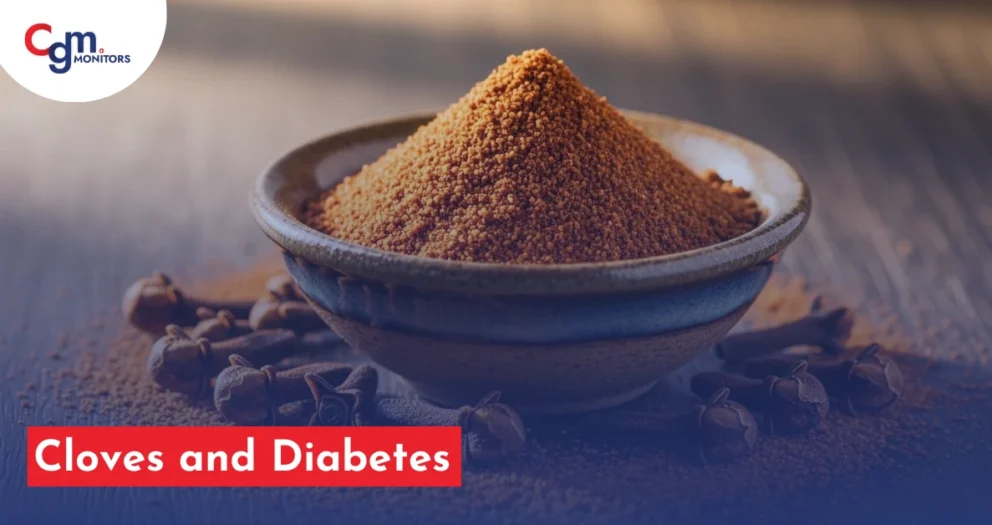Table of content
Introduction
People suffering from Diabetes Mellitus always look for the most efficient management plan to treat this disease. They want their sugar levels to be optimal so that they do not develop any complications. For this purpose, they can take benefit of various treatment plans. However, an Insulin resistance diet and exercise are considered to be the best interventions in this matter.
This is because this type of solution is free from side effects and shows remarkable results. A good diet plan for insulin resistance problems improves the overall quality of life.
What is insulin resistance?
Insulin resistance is a biological condition in which the cells of your body become less responsive to the hormone; insulin. The pancreas produces this hormone. Insulin is responsible for regulating the levels of glucose in the blood by signaling cells to take up glucose from the bloodstream and use it for energy or store it for later use. In insulin resistance, the cells become less sensitive to insulin.
It means they do not respond to the hormone’s signals to take up glucose. As a result, the pancreas has to produce more insulin to try and compensate for the decreased sensitivity, which can eventually lead to high levels of insulin in the bloodstream. This condition turns out to be Diabetes Mellitus.
The causes of insulin resistance are not fully understood, but it is believed to be related to a combination of genetic and lifestyle factors. Some risk factors for insulin resistance include being overweight or obese and leading a sedentary lifestyle. A family history of diabetes and aging is also associated with this condition.
Impact of obesity & exercise on insulin resistance
Obesity and a sedentary lifestyle are two of the major risk of developing insulin resistance that results in diabetes. Obesity negatively affects the sensitivity of your body toward insulin. If it is not managed promptly, it can also lead to cardiovascular (heart) diseases.
If a person does not do moderate exercise daily, the sugar in the bloodstream does not get absorbed and utilized by your cells. As a result, more insulin is produced, and Hyperinsulinemia is developed in your body. Several studies have shown that losing weight through diet and exercise can improve insulin sensitivity and reduce the risk of insulin resistance.
A healthy weight loss goal is to aim for a slow and steady loss of 1-2 pounds per week, as rapid weight loss can lead to muscle loss and may be difficult to maintain long term. Physical activity is an essential factor in preventing and managing insulin resistance. Both aerobic exercise (such as running, swimming, or cycling) and resistance training (such as weight lifting) has been shown to improve insulin sensitivity.
A combination of both types of exercise may be the most effective for improving insulin resistance, as resistance training can help increase muscle mass and reduce fat mass. In contrast, aerobic exercise can improve cardiovascular health and overall fitness.
Best insulin resistance diet
Making the best diet plan for insulin resistance is a matter of prime importance for diabetic patients. It is because your diet plays a significant role in treating this condition. A balanced diet maintains your blood sugar levels and imparts little or no stress on the pancreas to produce unnecessarily large amounts of insulin.
Here we have mentioned foods to avoid and foods you must consume to control your insulin resistance.
Foods to avoid with insulin resistance
Eating less is more important than eating well for diabetes. The patients must cut their calories to manage their insulin resistance well.
Here we have mentioned some foods to avoid with insulin resistance to maintain blood glucose levels.
Sugary beverages: Sugary beverages such as soda, fruit juice, energy drinks, and sweetened coffee and tea can cause a rapid rise in blood sugar levels. They contain large amounts of added sugar and provide little nutritional value. Consuming sugary beverages can contribute to weight gain, a risk factor for insulin resistance.
Refined white grains: Refined white grains, such as white bread, pasta, rice, and flour, have been stripped of their fiber and nutrients, leaving behind a simple carbohydrate quickly digested and absorbed into the bloodstream. This can lead to a rapid rise in blood sugar levels and insulin resistance over time.
Dried fruit & fruit juice: While fruits are generally a healthy food choice, dried fruit, and fruit juice should be consumed in moderation or avoided altogether for people with insulin resistance. Dried fruits are concentrated sources of natural sugar and can cause a rapid rise in blood sugar levels. Even if it is 100% fruit juice, fruit juice is also high in sugar and lacks the fiber and nutrients found in whole fruits.
White potatoes: White potatoes are a high-glycemic-index food, meaning they can cause a rapid rise in blood sugar levels. This is because they are quickly digested and absorbed into the bloodstream, causing a surge in insulin production. On the other hand, sweet potatoes have a lower glycemic index and can be a better option for people with insulin resistance.
Diet for insulin to lose weight
Losing weight is one of the primary tasks that a diabetic patient must do if he/she is obese. It is because obesity plays a significant role in developing insulin resistance. To lose weight, a patient needs to exercise and eat healthy food.
Here is the most appropriate diet for insulin resistance to lose weight.
Pay attention to calorie consumption
Calorie consumption is one of the most critical factors in weight loss. In order to lose weight, you need to consume fewer calories than you burn each day. This can be achieved by choosing lower-calorie foods and increasing physical activity levels. It is also essential to avoid excessive calorie restrictions. It is because this can slow down your metabolism and make it harder to lose weight in the long term. Aim for a moderate calorie deficit of around 500-750 calories per day to promote steady weight loss.
Avoid bad fats, move to good fats
The types of fats you consume can greatly impact your overall health and insulin sensitivity. Saturated and trans fats are considered “bad” fats, as they can contribute to inflammation and insulin resistance. Such fats are commonly found in fried foods, processed snacks, and fatty meats. On the other hand, “good” fats like monounsaturated and polyunsaturated fats can improve insulin sensitivity and reduce inflammation. These fats are found in avocados, nuts, seeds, fatty fish, and olive oil. Aim to include more healthy fats in your diet while limiting your intake of saturated and trans fats.
Consume low carbohydrates
Carbohydrates are a significant energy source for the body, but consuming too many can lead to insulin resistance and weight gain. When you eat carbohydrates, your body breaks them down into glucose, which triggers insulin release. Over time, consuming too many carbohydrates can cause your body to become less sensitive to insulin, leading to high blood sugar levels. To reduce insulin resistance, a low carbohydrate diet is crucial. Foods with low carbs are slowly digested and absorbed in your body, promoting weight loss.
Foods for insulin resistance
Finding the best foods and diet plans that help diabetic patients manage insulin resistance is a great concern for them. Here is a list of foods that lower insulin and help with insulin resistance.
Vegetables are your friends: Vegetables are a great source of fiber, vitamins, and minerals, which are essential for maintaining good health. They are also low in calories and water content, making them an ideal food for managing insulin resistance. Vegetables like broccoli, spinach, kale, and Brussels sprouts are particularly beneficial for insulin resistance because they are high in fiber and low in carbohydrates.
A high-fiber diet is the best: A high-fiber diet is the best type of diet for managing insulin resistance. This is because fiber helps slow down sugar absorption into the bloodstream, which helps regulate blood sugar levels. Foods that are high in fiber include whole grains, fruits, vegetables, nuts, and seeds. Some of the best high-fiber foods for insulin resistance include oatmeal, quinoa, barley, lentils, and beans.
A diet rich in protein: A diet rich in protein is also beneficial for managing insulin resistance. This is because protein helps to regulate blood sugar levels. Foods high in protein include lean meat, poultry, fish, eggs, and low-fat dairy products. Vegetarian sources of protein include tofu, tempeh, beans, and lentils.
Fruits in controlled quantity: Fruits are a great source of vitamins, minerals, and fiber, but they also contain natural sugars that can cause blood sugar levels to spike. Therefore, eating fruits in controlled quantities is important if you have insulin resistance. Low glycemic index fruits such as berries, cherries, and apples are excellent choices for people with insulin resistance.
Role of CGM in managing insulin resistance
The continuous Glucose monitoring system has emerged as a blessing for diabetic patients who have developed insulin resistance. It is a real-time blood glucose monitoring device that primarily helps you check your blood sugar levels throughout the day. You can quickly analyze the rise and falls in sugar levels comfortably.
It enables you to devise a better treatment plan. It also assists you in figuring out which insulin-resistance diet plan is more effective for you. Many types of CGM systems are available in the market. However, Freestyle Libre 3 and Dexcom G7 are considered excellent. They have earned significant popularity in the market due to their high accuracy and compact design.
If you want to buy these innovative devices, visit cgmmonitors.com. Here, you will find the best quality CGM monitors at a reasonable price.
Conclusion
Insulin resistance is when the body’s cells become less responsive to the hormone insulin. Obesity and a sedentary lifestyle are two major risk factors for developing insulin resistance. A combination of diet and exercise can help improve insulin sensitivity and reduce the risk of insulin resistance.
Sugary beverages, refined white grains, dried fruit, fruit juice, and white potatoes are some foods to avoid with insulin resistance. A healthy diet for insulin resistance should include foods such as non-starchy vegetables, lean protein, healthy fats, whole grains, and low-glycemic index fruits. Paying attention to calorie consumption is also essential for weight loss in insulin resistance.
Frequently Asked Questions
What is insulin resistance?
Insulin resistance is when cells become less responsive to insulin, leading to high levels of insulin in the bloodstream and eventually diabetes.
How does obesity affect insulin resistance?
Obesity negatively affects insulin sensitivity, leading to high insulin levels and diabetes. Exercise and weight loss can improve insulin sensitivity.
What are some foods to avoid insulin resistance?
Avoid sugary beverages, refined white grains, dried fruit and fruit juice, and white potatoes to maintain blood glucose levels.
What is the best diet plan for insulin resistance?
A balanced diet with fewer calories is best for insulin resistance. Avoid sugary beverages, refined grains, dried fruit, and white potatoes.
How can I lose weight with insulin resistance?
Pay attention to calorie consumption, choose lower-calorie foods, and exercise regularly with a combination of aerobic and resistance training.















Pingback: DASH Diet for Diabetes: Meal Plan for Managing Blood Glucose